Review: 2011 Nissan Juke
Because car enthusiasts tend to be more interested in cars themselves than the industry that creates them, critics and commentators tend to praise engineers while vilifying accountants, marketers and the countless other professions required to bring a new car to production. The assumption seems to be that engineers develop great cars which are then cheapened, blandified and otherwise screwed up by everyone else. Obviously this is an oversimplified perspective, but in certain cases it’s downright undeniable. Rarely has it been more true than with the Nissan Juke.
Now I know what you’re thinking: the villain of project Juke was the legally-blind eldritch abomination who styled it. Having read initial reactions to the Juke’s styling (and yes, even fanned the flames a bit), it’s clear that the “design issue” dominates perceptions of Nissan’s B-Segment “crossunder” (or, to use Nissan-approved language, “SportCross”). The good news is that, as is becoming increasingly common for new cars, the design works far better in three dimensions than two.
A weird mix of coupe and crossover, the Juke mashes a number of Nissan design cues into a crazed pastiche: the swollen wheel arches and elongated turn signal lights of the Leaf, the rounded rear hatch of the Infiniti crossovers, the 370Z’s tail lights (with a dash of Volvo C30 mixed in) and the Z-meets-Kia Soul greenhouse actually combine for a look that is utterly distinctive, and not entirely unpleasant.
Only the front end remains truly challenging in person, with Nissan-consistent turn signal lights fighting for attention with the protruding, nostril-like round headlights. A more brand-consistent front end end might have broadened the Juke’s appeal in this country, but on the other hand, anonymity kills in the under-publicized subcompact crossover segment (see: Suzuki SX4). But even forgetting the fact that aesthetics are an obviously subjective matter, it simply wouldn’t be fair to blame the Juke’s designers for ruining the car.
That’s because Nissan’s product-planning and market-research teams had fundamentally hurt the Juke before a single stylist had the chance to touch it. According to Nissan’s reps, the Juke was developed with a very specific market in mind: 18-34 year-old males making $45k+, or as Nissan calls them, “Urban Experience Seekers.” This focus is what allowed the daring exterior design, but more importantly it clearly led the development team to emphasize style over substance on nearly every key decision.
This is most clear in the Juke’s packaging, which scrupulously avoids any hint of practicality. The concealed rear door handles lend the Juke a surprisingly coupe-like look, but they also hint at the rear bench’s coupe-like appointments. Knee and headroom are severely constrained for anyone approaching the six-foot mark, and claustrophobes of any size need not apply. Between the pinched-off greenhouse, and a moonroof (standard starting at the midlevel “SV” trim) that brings the headliner even lower (before terminating a few inches from the rear passenger’s forehead), the Juke’s back seat is a dark,
unhappy place. Since the rear seats don’t fold flat, and cargo room under the hatch is limited, the Juke clearly wasn’t developed to be used like a real crossover.
Nor was the Juke designed to make good on its lifted, SUV-inspired pretensions. Nissan didn’t provide any opportunity to test the Juke on anything more extreme than rough tarmac, and the PR reps gently fended off inquiries about the Juke’s capability on rough terrain by emphasizing its mission as a “urban crossover.” And with good reason: the black plastic faux-skidplate on the Juke’s nose might look like it’s designed to improve the approach angle, but in reality it merely conceals (rather than protects) a low-hanging radiator that would be immensely vulnerable in even a rock-strewn dirt road scenario. Moreover, Nissan makes no off-tarmac claims about its torque-vectoring all-wheel-drive system, focusing instead on its “enhanced agility” and ability to reduce understeer in on-road cornering.
With its pretensions of crossover practicality and SUV ability stripped away, the Juke’s remaining identity is as a slightly-practical sports coupe
with a high seating position, and on this level it works far better than you could possibly expect. Yes Virginia, under the Juke’s shock-factor styling and layers of what can only be properly described as marketing bullshit, Nissan’s engineers have built a truly remarkable little car.
Starting with the platform that underpins the Nissan Versa (a car that precisely nobody praises for its dynamic abilities), Nissan’s engineers widened the track by a full three inches, and were rewarded with a chunky, chuckable little car that is way more entertaining than it has any right to be. Despite the jacked-up bulk required to keep Urban Experience Seekers from feeling like they’re driving something more than a mere car (in AWD/CVT trim it’s a 3,000 lb B-segment car), body roll is practically nonexistent. Though steering is on the light side by enthusiast standards, it’s still sensitive and precise. Using a small steering wheel from the elevated “command-style” driver’s seat lends the Juke a distinctive feel in enthusiastic driving that’s entertaining in a wholly unserious way. Imagine a cross between a MINI and a Subaru Forester XT, and you’re getting the picture.
B
ut if the Juke’s chassis is merely better than you’d expect, its standard 1.6 liter, direct-injected turbocharged four-cylinder engine is without question the single best reason to ignore all of the Urban Experience Seeker twaddle and drive the peculiar little Nissan. Making 188 hp and 177 lb-ft, this little cracker of an engine fizzes with brio and motivates the Juke with aplomb. Turbo lag is minimal, although it’s enough to slow standing launches noticeably. But in return for that sacrifice, a carefully-driven Juke should easily return the 25/30 MPG it’s rated at in its thirstiest trim. Besides, in-gear acceleration is a far more important real-world attribute, and the Juke happily pushes through all six (manual) gears with an infectious, mechanical, zinging whine. If downsized, direct-injected, turbocharged engines are the future (and they are), the Juke’s feisty mill is cause for optimism.
So too is the Continuously Variable Transmission (CVT), which holds its simulated gears with tenacity (particularly in “Sport” mode), keeping the engine’s delightful boost at a constant state of readiness. Once the enemy of enthusiasm (and in underpowered applications like the Cube, it’s still a burden), the CVT’s electronic brains have been well-refined, and it’s an unobtrusive but intuitive partner in any kind of driving style. Which is a very
good thing, considering the AWD system (a $1k upgrade) also requires the rubber-band-box (a $500 option). On the other hand, the AWD’s advantages were hardly noticeable even on rough sections of British Columbian back roads, and its extra weight and elimination of under-floor storage in the cargo area count against it.
Given the Juke’s sporting style, it’s tough to recommend anything other than the front-drive, manual transmission drivetrain. Neither torque steer nor understeer is a serious issue in the Juke, and caning the fizzy little engine through six manual ratios is pure pleasure. Like its off-road pretensions and willful styling, the AWD option seems to exist solely to satisfy the subjective wants of Urban Experience Seekers rather than to actually make the Juke a better car. And given its shortcomings in terms of practicality, the extra storage space in FWD models is likely to be used more often than any AWD advantage. Still, the Juke’s abundant driving character comes through in all of its drivetrain configurations.
Base “S” trim Jukes start at $18,960 (plus $750 destination charge), but are available only with the CVT transmission. Though hardly cheap, these models are quite well-equipped, offering iPod/Bluetooth connectivity, a grip of airbags, stability and traction control and a number of other increasingly-common features.
The mid-level “SV” trim adds all of the really worthwhile features like keyless starting, automatic climate control, moonroof, USB iPod control, moonroof and improved steering wheel and upholstery materials. It also adds Nissan’s I-CON system which integrates climate and dynamic controls into a single unit which switches modes and button functions at the push of a button. Though at first it seems like an Urban Experience-related gimmick, the system works on functional, aesthetic and sensible gee-whiz levels. The “SL” trim adds more luxury touches like heated leather front seats and navigation, but we’d spend our hard-earned on the SV-trim FWD version with manual transmission for $20,260 ($200 less than an AWD “S” model).
The Juke’s interior is perhaps a little disappointing at that price point, with lots of mid-grade black plastic that’s been moderately well-assembled. The I-CON system’s knobs are the biggest quality problem inside, as they feel like they’re barely attached to the unit. The instrument panel itself is finished in a
piano-black material that adds some needed quality, although navi-equipped models use a head unit that doesn’t match it, ironically making SL-spec interiors look less well-finished. Other questionable Urban Experience interior features include a gearshift surround finished in high-gloss paint that’s said to be motorcycle inspired (for some unexplained reason) and garish chrome door handles. Otherwise, there’s little to complain about.
On the whole, the Juke reinforces the cult of the automotive engineer as much as it reinforces the widely-held belief that automotive marketers are good at screwing up a good thing. Without the marketers, it’s tempting to believe that Nissan’s engineers would have widened the Versa platform, added the fantastic turbocharged engine, and then decided to simply put a steroidal Versa body on top, creating the king of all B-segment hot hatches. Later they might have even added an spacious, practical mass-market crossover with an AWD option.
Instead, the marketers decided to build a car that could be all things to all hip 18-34 year-old urban males, saddling the Juke with extra weight, reduced practicality and a Lovecraftian front end. That the Juke still ends up being as good as it is, is an enduring testament to Nissan’s engineers.
Nissan flew us to Vancouver BC, put us up for a night in an expensive hotel, and wined and dined us in traditional press launch fashion to make this review possible.
More by Edward Niedermeyer
Latest Car Reviews
Read moreLatest Product Reviews
Read moreRecent Comments
- Kjhkjlhkjhkljh kljhjkhjklhkjh [h3]Wake me up when it is a 1989 635Csi with a M88/3[/h3]
- BrandX "I can charge using the 240V outlets, sure, but it’s slow."No it's not. That's what all home chargers use - 240V.
- Jalop1991 does the odometer represent itself in an analog fashion? Will the numbers roll slowly and stop wherever, or do they just blink to the next number like any old boring modern car?
- MaintenanceCosts E34 535i may be, for my money, the most desirable BMW ever built. (It's either it or the E34 M5.) Skeptical of these mods but they might be worth undoing.
- Arthur Dailey What a load of cow patties from fat cat politicians, swilling at the trough of their rich backers. Business is all for `free markets` when it benefits them. But are very quick to hold their hands out for government tax credits, tax breaks or government contracts. And business executives are unwilling to limit their power over their workers. Business executives are trained to `divide and conquer` by pitting workers against each other for raises or promotions. As for the fat cat politicians what about legislating a living wage, so workers don't have to worry about holding down multiple jobs or begging for raises? And what about actually criminally charging those who hire people who are not legally illegible to work? Remember that it is business interests who regularly lobby for greater immigration. If you are a good and fair employer, your workers will never feel the need to speak to a union. And if you are not a good employer, then hopefully 'you get the union that you deserve'.

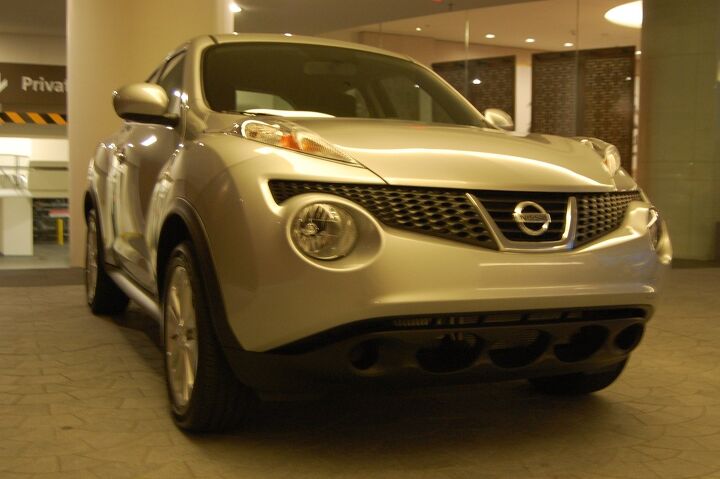
































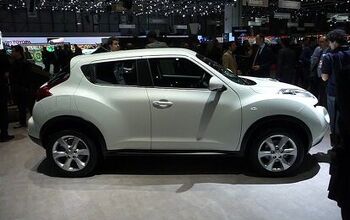
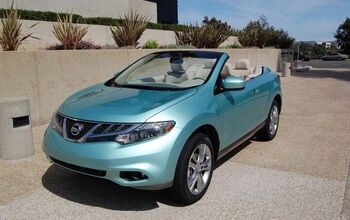

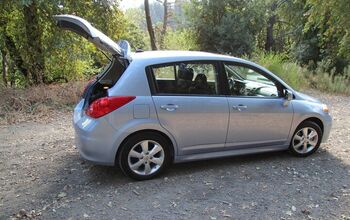
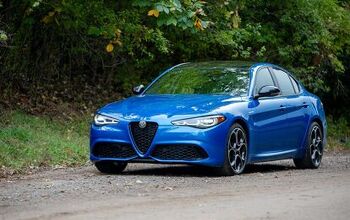









Comments
Join the conversation
I'll say this about the Juke (by the way, I'm a 47 y/o male making 3-4 times the demographic income)I'm not loving the body styling as a whole. Certain elements "float my boat" other design cues make me cringe. I'm currently driving an Infiniti (G35 Coupe)and this "thing" (Juke) is fun to drive. Seriously, it's a BLAST. So much fun in fact that I sometimes think I prefer it to the G Nuff said. This little freak is a winner
You can't change the way it looks, now. But the question I have after reading this review is, how does AWD change the picture? The suspension is completely different at the rear with AWD, and I'd like to know which one the test drive was actually taken in. I'm considering buying a Juke in SV trim, with CVT and AWD, not because I need/want AWD, but because it has more sophisticated suspension, and AWD may minimize FWD Torque Steer effects on rough pavement, in standing starts, that sort of thing. Note: Bicycle carrying is nice, but I carried a bicycle in a 1965 Corvair. You put it in front of the rear seat, upright, handlebars positioned full left, left pedal at the top and it fit like it was made for it. Yes, it was a bit difficult to do without 4 doors, but you want 4 doors if you are going to carry passengers anyway, right?